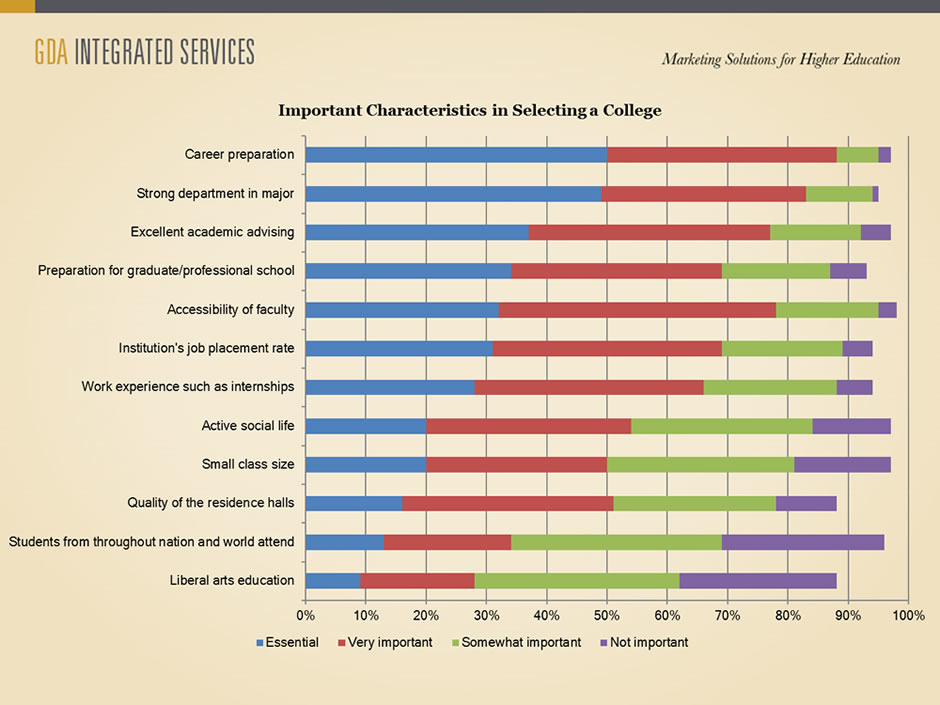How to Create a Visibility-Focused Student Search Campaign
by Bob Campagnuolo and Jonathan Steele, principals, GDA Integrated Services
Most likely, there is nothing wrong with the search lists your institution is buying. If you are targeting students who match your academic parameters and who live in the most productive zip codes, you are still getting in front of your best audience. As we stated in the first part of this article, those lists are yielding results even if they can be difficult to measure.
However, there could be something wrong with the search messages you are sending to these prospective students. Too often, search letters sound very much alike. In fact, we have seen Facebook postings from students who upload photos of identical mailings from different schools. Institutions also tend to pack too much information into one communication, creating a kind of verbal white noise that mutes the overall impact of the message.
If you sharpen the focus of your search communications, you’ll build visibility and awareness of your institution with your target audience, regardless of traditional response rates.
Focus on what your audience wants
Search messages should focus on the characteristics that are most important to prospective students and their parents. In a recent national survey conducted by GDA Integrated Services, we asked students to rate college characteristics by importance:

Your search messages should zero in on the characteristics most important to your prospective students and demonstrate specifically how your institutionis able to deliver on those characteristics better than your peers.
Focus on your distinctions
Every search communication you send to prospective students should emphasize your best strengths and distinctions. You can change specific content in variables targeted to students interested in specific majors or who live in specific geographic areas or other variable criteria of your choice. But the main messages should be clear, crisp, and consistent, carving out a distinctive niche for your institution in the crowded landscape populated by hundreds of competing institutions.
Focus on student interaction, not “response.”
Direct mail and emails to students should drive students where they want to go anyway. We know from our research that students prefer to explore college websites directly rather than wait for additional information to be sent to them. Therefore every search communication to students should include a personal URL that directs students to a search-specific microsite/landing page.
The microsite allows you to control the narrative, hewing closely to the key messaging you have established for your visibility-focused search campaign. It also packs all the content in which prospective students are most interested in one place (academics/majors, financial aid and scholarships, outcomes, internships, etc.) Of course, the microsite also includes multiple links to appropriate content on your main website.
Designing a search-specific microsite not only allows you to control the conversation with prospective students, it also allows you to track every student who visits the site, whether the original source was a direct mailing or email. Most important, it also provides you with the ability to track and measure the students who actively interact with the content, whether or not they “respond” traditionally.
